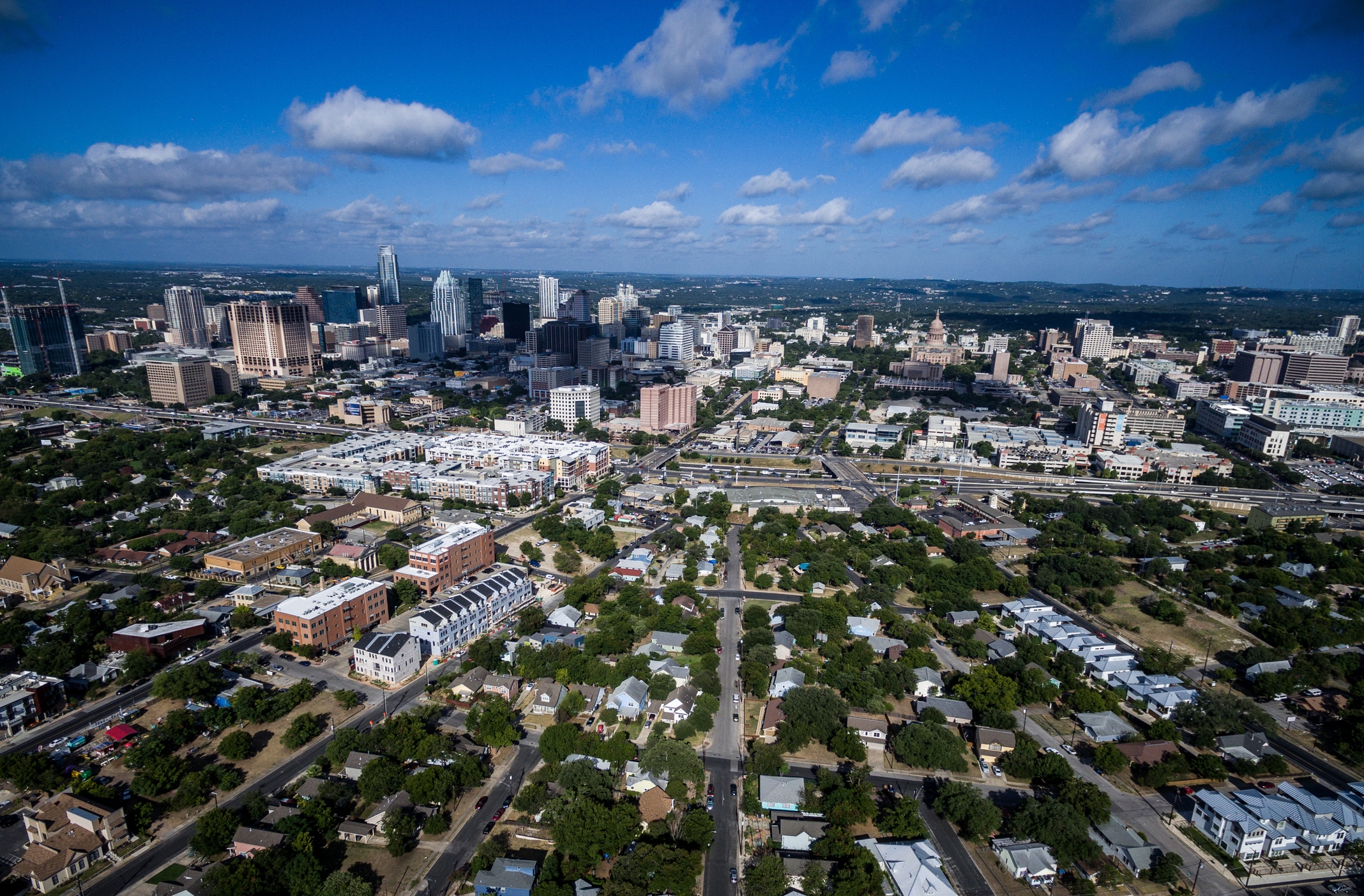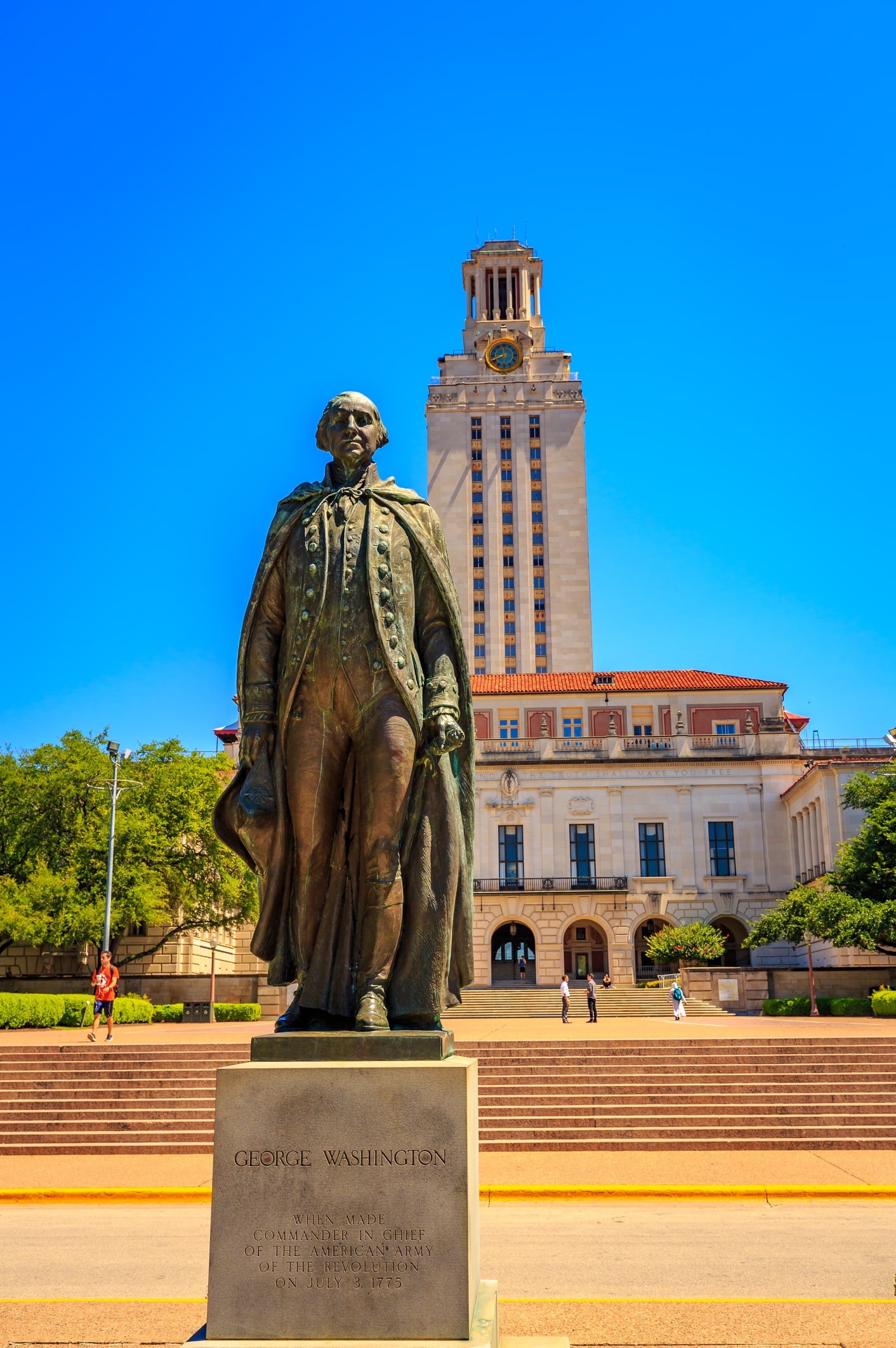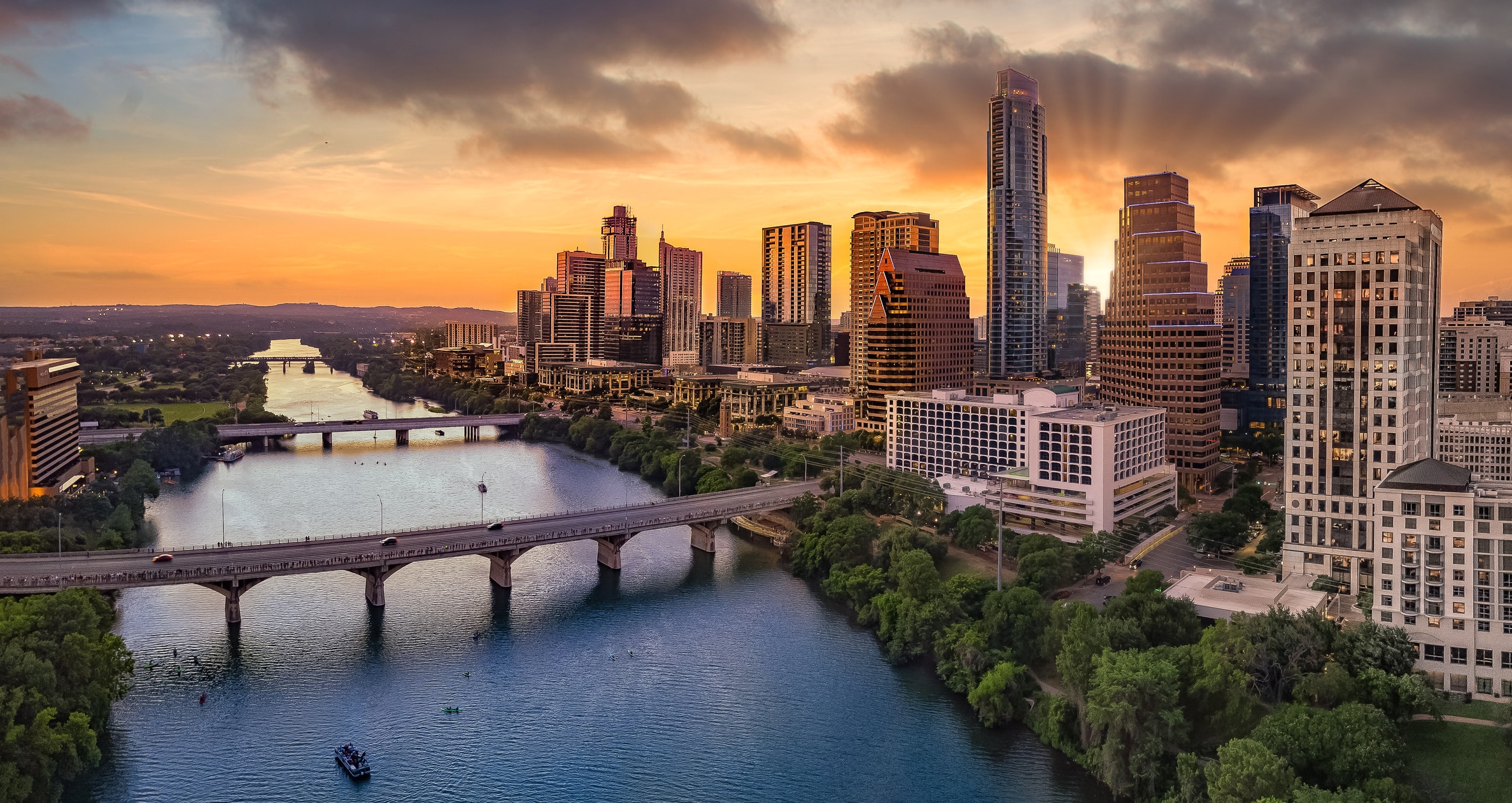(Updated October 29, 2024)
Welcome to Austin, the land of cowboys, hippies, and … full-stack programmers?
Yes, that’s right. These days, Austin is as much about high-tech innovation as it is about barbecue and live music. With a population of nearly one million, and centrally located just a couple hours from cities like San Antonio, Dallas, and Houston, Austin has become one of the most sought-after places to live in the United States.
Known for its vibrant music scene, incredible food, and a laid-back culture that embodies the classic phrase, "Keep Austin Weird," there are countless reasons why moving to Austin, TX, could be the adventure you're looking for.
Before we move on, let’s be honest — every city has its flaws. Whether it’s the brutal, frigid winters of Chicago or the horrible, never-ending traffic in California, nowhere is perfect. Living in Austin, Texas, brings great job opportunities and a strong sense of community, but it also comes with downsides, like rising costs.
This article will discuss the good — and the bad — of moving to Austin. But the most important thing to consider is whether moving to Austin, TX, could be the right decision for you.
7 Things to Know Before Moving to Austin, TX
When you dream of Sixth Street, Austin’s famed entertainment district, you might think of late-night honky tonk and hippies walking barefoot through the streets. However, although you can still find honky tonk at the White Horse, the rest of the city has changed quite a bit.
You don’t want to uproot your life and plan a cross-country move to Austin, Texas, only to find that the city you’re looking for no longer exists. So below, we’ll dive into everything you need to know before heading to this incredible city.

1) The cost of living in Austin, Texas isn’t a Texas-sized bargain
With the population explosion and cultural changes that have occurred over the last decade, Austin isn’t as affordable as it once was. The average rent in Austin is $1,703 as of 2024, enough to rank it among the 20 least affordable cities in the U.S. by some metrics.
Even so, Austin is still much cheaper than the coasts. The average rent in Los Angeles is about 60 percent higher than Austin, at a whopping $2,719. That might explain why so many people have found themselves moving across state lines from La La Land to the land of Honky Tonk over the last few years.
It’s not just housing either; costs in general are lower in Austin than on the coasts. But if you’re moving from, say, some other part of Texas, Austin will almost certainly be pricier. We’ll get to some of the great parts of Austin, but the point is — Austin isn’t a city of bargains, so it’s best to know what you’re getting into.
Here are a few tips when facing the cost of living in Austin, Texas:
Search for homes on Austin’s outskirts to avoid downtown prices.
Budget for higher electric bills in the summer. (Trust us, air conditioning in Texas isn’t optional.)
Compare property taxes between neighborhoods to dodge unexpected costs.
2) Austin’s tech sector is humming
While housing might be pricey in Austin, that’s partly because the economy is booming. Over the last five years, Austin’s GDP has grown at a massive rate of 31.2 percent, making it the third fastest-growing major economy in the United States. That’s thanks to major tech players like Tesla, Dell, and Apple, all of which have offices here. It’s not uncommon for Austin to be called the “new Silicon Valley.”
Given this reality, tech workers should find plenty of job opportunities. Plus, the boom in tech has bolstered other industries like healthcare, education, and even restaurant groups. You'll find work if you know where to look, but remember, it’s competitive. Austin is growing rapidly for a reason — a lot of people want to live there. And if you’re wondering what salary you need to live in Austin, TX, the average is $65,250.
New to town? Network, network, and network some more.
Focus on Austin-specific job boards, such as Built In Austin or Austin Digital Jobs.
Utilize co-working spaces. Many startups and freelancers use these for working — and collaboration.
3) The best neighborhoods in Austin, TX, offer something for everyone
Austin has a whole range of “personalities” depending on what part of town you’re in. Whether you need a quiet place to raise kids, a creative hub to feed the soul, or just want to be surrounded by great restaurants, Austin has you covered.
Ultimately, Austin's people are what make it great. They’re friendly, open-minded, and community-oriented, and they’ll make any neighborhood feel like home.
Best neighborhood for families in Austin: Tarrytown
Tarrytown is a favorite among Austin families for good reason — it’s quiet, beautiful, and tucked away from some of the city’s intensity. Young families moving to Austin, TX, will enjoy the quiet charm due to the lack of tourist spots. Plus, it’s home to spacious parks like Mayfield Park and Nature Preserve where, yes, you might see a peacock roaming freely. And for the adults, there’s the Lions Municipal Golf Course, an 18-hole course with views of the Colorado River.

Best neighborhood for young professionals in Austin: East Austin
If you’d like a bit more action, East Austin offers a mix of culture, creativity, and convenience. Longtime Austin residents treat the area as one large neighborhood, but it’s made up of several sub-neighborhoods, like East Cesar Chavez, Holly, and Central East Austin.
In each of these areas, you’ll find unique character brought together by an energetic and artistic vibe. New residents moving to Austin, TX, will enjoy the city’s flamboyant offerings here. There’s a robust bar and microbrewery scene (did we mention Hi Sign Brewing?), the best tacos on planet Earth (looking at you, Veracruz), and world-class restaurants like Justine’s.
Best overall: Downtown Austin
If you want to jump right into the Austin experience, Downtown Austin is where you should start. The area has upscale condos, high-end dining (seriously, go to Uchi, pronto), and vibrant nightlife.
The famous “Sixth Street” runs right through the middle of the neighborhood, where you may hear buskers on the sidewalk or stumble upon a surprise blues set at the Moody Theater. Living downtown gives you easy access to Lady Bird Lake for running or paddleboarding. You’ll pay more to live downtown, but if it’s all about the lifestyle for you, you’ll find it here.
4) Traffic and commuting in Austin, Texas, is challenging but manageable
Considering the city’s growth, it’s no surprise that traffic is now a major concern for residents, especially during rush hours on highways I-35 and Mopac (Loop 1).
If you’re moving to Austin, TX, you should know the city’s infrastructure has struggled to keep up with the influx of new residents. However, compared to other major cities like Los Angeles, it’s not bad at all. It’s all about patience (and finding the right podcast).

5) The education and school system in Austin, Texas, is highly rated
Anyone with doubts about Texas education hasn’t spent much time in Austin. The city’s public school education system is one of the reasons families love moving to Austin, TX.
You’ve got quality districts like Austin Independent School District (AISD), Eanes ISD, and Round Rock ISD, which rank among the best in the state. Plus, at its core, Austin is a premier college town. It’s home to the University of Texas, one of the best public universities in the country.
6) The weather in Austin, TX, offers year-round vitamin D
If you’re moving to Austin, one thing is certain: you better like sunshine. All year long, you’ll be catching rays. The summers are hot, and the winters are, well … not quite as hot. But, hey, that’s what you get when there’s over 300 days of sun a year.
The good news is that you’ll have plenty of time to explore the city’s greenspaces, such as Lady Bird Lake or Zilker Park. Plus, the consistent weather means you’ll experience numerous outdoor festivals throughout the year, such as Austin City Limits (ACL) and South by Southwest (SXSW).
7) High costs come with a good life
Today’s Austin is much different from the hippy paradise of the ‘60s, but it’s still a wonderful community to call home, and that’s why so many people are moving to Austin, TX.
Things aren’t as budget-friendly these days, but lots of residents will tell you that the quality of life more than makes up for the cost. Yeah, you’ll pay more to live here than other cities in Texas, but it still comes in lower than major coastal cities like LA or NYC. You’ll probably get more culture in Austin, too.
But one thing is for sure: if you do decide on moving to Austin, TX, be mindful of its long-term residents. Recognize that the city has changed a lot — and you’re part of that change — so bring something to offer while honoring the past. The community will thank you and welcome you.

The Pros and Cons of Living in Austin, Texas
As we’ve discussed, living in Austin has its perks, but there are a few downsides. Let’s summarize:
Pros:
A booming job market, especially in tech, healthcare, and education
A vibrant cultural scene with live music, festivals, and great food
Plenty of outdoor activities, with parks, greenbelts, and Lady Bird Lake
A strong community spirit — Austin is known for being welcoming and friendly
Cons:
A rising cost of living, particularly for housing, compared to other Texas cities
Heavy traffic congestion, especially on major roads like I-35 and Mopac
Intense summer heat, often exceeding 100℉ during peak months
Limited public transportation options, making car ownership almost essential

Is It a Good Idea to Move to Austin, Texas?
Moving to Austin, TX, can be a great idea — as long as you know what to expect.
The city’s incredible spread of offerings make it a tempting spot for any family or young professional. You’ll find a thriving job market, lively cultural events, beautiful weather, and ample outdoor activities. However, rising costs, heavy traffic, and that pesky summer heat can be significant drawbacks. It comes down to personal preference.
If you decide to make the jump, consider hiring a full-service mover to avoid the headaches of moving so you focus on what really matters, like starting your new life. As your moving partner, Colonial Van Lines brings 50 years of long-distance moving experience and can take care of whatever you need, from packing and loading to driving and unloading. Get your free quote today!

